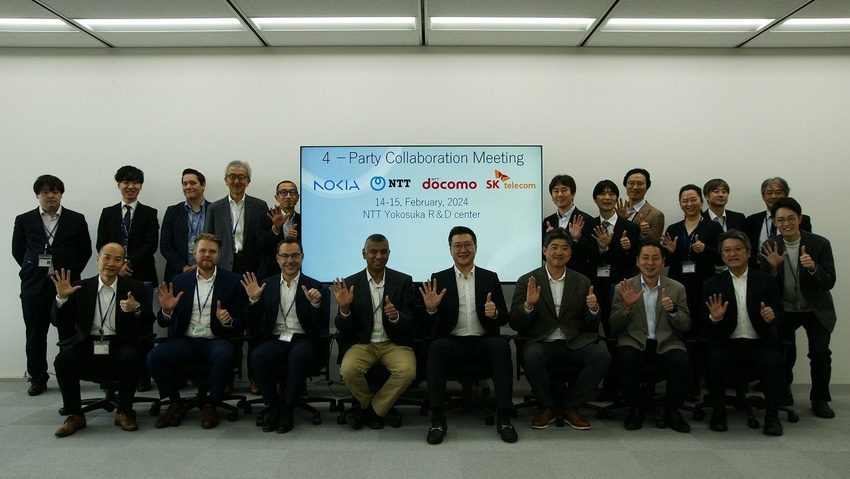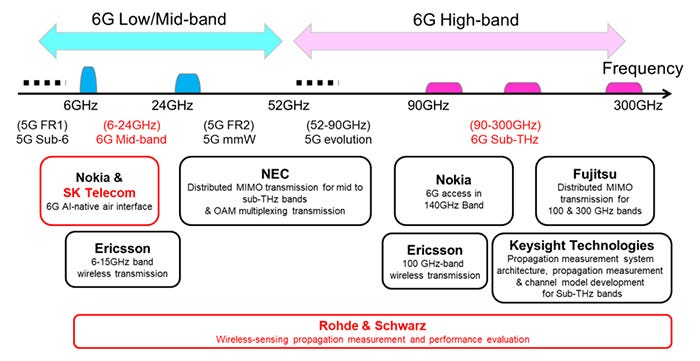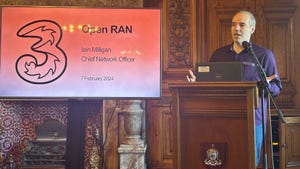SKT unites with Docomo, NTT and Nokia to develop 6G AI air interface
SK Telecom will join NTT Docomo, Nokia and NTT in working to boost network performance and energy efficiency through the 6G AI-native air interface.

SK Telecom (SKT) has joined the existing 6G collaboration between NTT Docomo, Nokia and NTT, allowing the companies to expand the scope of 6G AI-native air interface (AI-AI) testing and validation, while exploring a broader range of business use cases for the technology.
The companies said in a statement that 6G AI-AI is a critical next-generation technology that could greatly boost network performance while increasing energy efficiency.
With their collaboration, the four companies will be developing future proof-of-concept 6G AI-AI systems, which will be tested using selected use cases and real environmental scenarios.
These over-the-air validation tests will be conducted both in the lab and outdoors to best simulate real network results.
SKT, NTT, Docomo and Nokia will also work on improving AI model performance by using data generated from real networks or through simulation. This will be instrumental in developing AI training models for a best-in-industry AI air interface platform.
The four companies plan to show a video demonstration of an AI-AI proof-of-concept at the SKT booth at Mobile World Congress in Barcelona next week.
"This milestone represents a significant step forward in collaborative efforts towards the development of 6G core technology involving technology leaders from Korea, Japan, Europe and the United States," said Yu Takki, vice president and head of infra tech at SKT in a statement. "SKT will maintain its momentum in its R&D efforts of applying AI technology to network infrastructure as we move forward to become a global AI company."
Set up in 2022, the 6G collaboration between Docomo, NTT and Nokia was established with the goal of jointly defining and developing key technologies for future 6G systems.
Last week, the three partners announced that they have achieved two key technological milestones on the path to 6G.
The first is the implementation of AI and machine learning into the radio air interface, effectively giving 6G radios the ability to learn. The second is the use of new sub-terahertz (sub-THz) spectrum to dramatically boost network capacity.
NTT, Docomo expand 6G ecosystem partners
For Docomo and NTT, working with a diverse range of partners is essential in developing next-generation technologies for future 6G networks.
Outside its expanded collaboration with Nokia and SKT, the two Japanese companies have been conducting joint trials with Ericsson, Fujitsu, Keysight Technologies and NEC around potential frequency bands for 6G telecommunications.
And both companies have been keen to grow the number of partners working on these 6G trials.
In a separate statement, Docomo and NTT announced that – besides SKT – Rohde & Schwarz, a manufacturer of high-frequency high-performance measurement instruments, has been recently added to their growing ecosystem of partners for 6G.

6G trials being conducted by NTT and Docomo together with their partners. (Source: NTT Docomo)
Rohde & Schwarz will use its measurement-system design technology in channel models to evaluate new wireless-sensing solutions beyond mobile communication technologies. It will also evaluate wireless-sensing performance using measurements and channel models in real-world environments.
"Going forward, Docomo and NTT will continue to conduct trials in collaboration with major global and Japanese vendors as well as overseas telecom operators. We will further expand our partners and promote various initiatives that leverage their respective strengths, to research and develop various mobile communication technologies," the two companies said.
"Through these efforts, Docomo and NTT aim to accelerate research and development that will contribute to the global standardization and commercialization of 6G," they added.
The telco industry has a six-year window to develop the technologies for 6G: Commercial 6G services are expected to launch in 2030.
Read more about:
AsiaAbout the Author(s)
You May Also Like












